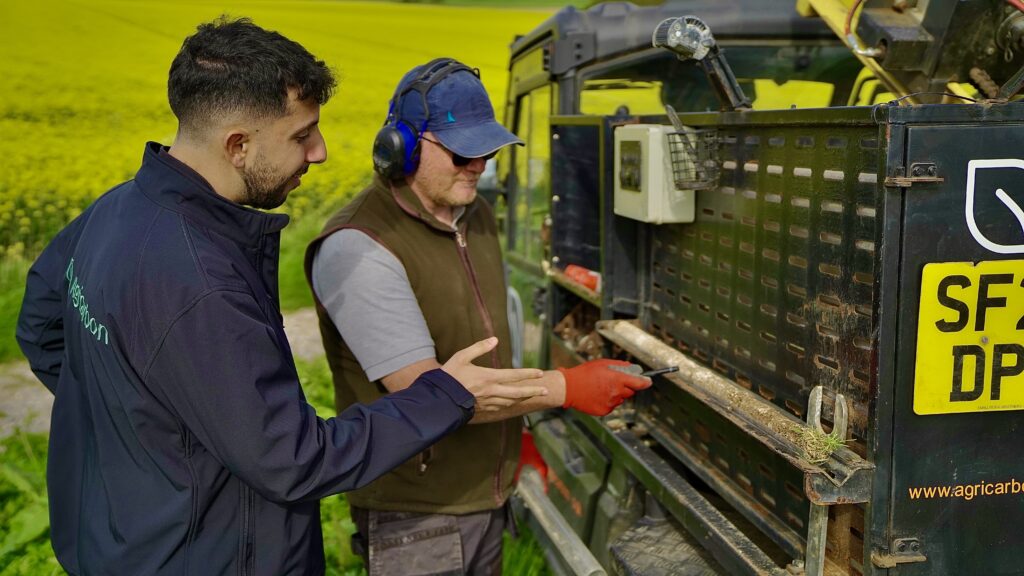Farmers are crucial in managing one of our most vital resources: soil. The health of soil impacts not only the yield and quality of crops, but also its ability to store carbon, an increasingly important tool in global efforts to combat climate change.
For those in agriculture, understanding how to measure soil carbon accurately is not just beneficial; it’s a necessity. Here’s a straightforward look at how to approach soil carbon measurement, with accuracy and reliability front-of-mind.
Why Soil Carbon Matters
Soil carbon is a good indicator of soil health. For farmers, healthy soil means healthier crops and livestock, and a reduced need for chemical inputs, which lowers costs and improves environmental impact.
But what does soil carbon have to do with climate change? Storing carbon in the soil means removing it from the atmosphere. Even if we stopped emitting greenhouse gases (GHGs) today, there is already too much of a concentration of GHGs accumulated in our atmosphere. Therefore, locking carbon in our soils is crucial in tackling the climate crisis.
The Economic Benefits of Soil Carbon
The economic incentives for enhancing soil carbon are significant, especially when considering the number and size of companies needing to reduce their Scope 3 emissions, and the potential to participate in the Voluntary Carbon Market (VCM).
Scope 3 emissions encompass the indirect emissions from a company’s value chain, including agricultural processes. Companies can pay farmers within their supply chain to adopt practices that build soil carbon.
This provides an additional revenue stream for farmers and enhances the marketability of their produce to environmentally conscious consumers and companies.
Alternatively, there are the carbon markets, where carbon credits (1 credit = 1 tonne of carbon dioxide equivalent) can be traded, incentivising farmers through financial rewards for their sustainable farming practices. As demand for carbon credits grows, the value of these credits can increase, making soil carbon management a financially attractive strategy alongside its environmental benefits.
The Importance of Accurate Measurement
The accurate measurement of soil carbon is vital for farmers looking to capitalise on the growing markets. Consistent, reliable measurement practices are essential for understanding soil health and meeting the stringent verification standards regulating the carbon markets.
These markets demand high levels of certainty in the data reported, meaning that any discrepancies can lead to disqualification or reduced value of carbon credits. Thus, investing in robust measurement techniques and aligning with respected standards[TS1] (such FAO-GSOC, GHG Protocol Land Sector and Removals (LS&R), and VM0042 from Verra) bolsters credibility and maximises the financial benefits of sustainable soil management practices.
Farmers can more effectively participate in these markets by ensuring their soil carbon data is accurate and trustworthy, securing a sustainable income stream while contributing to global carbon reduction efforts.

How to Accurately Measure Soil Carbon
Direct soil sampling is the only accurate method for measuring soil carbon [TS2] method for measuring soil carbon, and it is a process simplified by Agricarbon (www.agricarbon.earth).
Their method involves taking soil samples from multiple points within fields while maintaining the integrity and structure of the soil. Agricarbon advocates for sampling deeper than the conventional 30cm, as a significant amount of additional carbon can be stored at depth up to 1 metre, which often goes unmeasured.
Once collected, these samples are sent to their purpose-built laboratory and are analysed for soil organic carbon and bulk density. Agricarbon streamlines this procedure with automation and provides an easy-to-follow report, making what might seem a daunting task straightforward, efficient, and affordable.
This method offers precise data that is acceptable for all major protocols and standards associated with carbon credit revenue generation. It equips farmers with the information to make informed decisions about soil management and carbon sequestration efforts.
Getting Started
For farmers new to this process, here’s how to begin:
- Establish a Baseline: First, determine the current carbon stock in your soil. This baseline will help you track progress and assess the impact of your management practices over time.
- Plan for Monetisation: There are several incentives available; farmers can work with established carbon credit developers or begin conversations with the sustainability or procurement managers of their purchasers to discuss payment for the implementation of sustainable farming practices.
- Create a Carbon Management Plan: Working with agronomists and consultants is crucial to devising a plan tailored to your circumstances. This plan should encompass strategies for enhancing soil carbon sequestration based on your farm’s unique characteristics and commercial objectives.
- Plan for Regular Assessment: Soil carbon stocks change slowly, so monitoring changes in carbon stock— typically three to five years — is essential to understand trends and adjust practices accordingly.
Conclusion
Farmers have a unique opportunity to influence agricultural productivity and environmental sustainability through effective soil carbon management.
With robust measurement techniques, farmers can enhance soil health, participate in carbon credit markets, and contribute significantly to global efforts against climate change. By accurately measuring and managing soil carbon, farmers ensure the long-term health of their land and open new avenues for revenue, reinforcing agriculture’s vital role in our planet’s sustainable future.
Get Involved
Interested in learning more about how you can measure and manage soil carbon on your farm?
Reach out to Tom Sadan at Agricarbon for expert guidance and tailored solutions. Whether you’re new to the concept or ready to measure, Tom can provide the support you need.
Contact him via email at tsadan@agricarbon.earth or visit the Agricarbon website at www.agricarbon.earth to discover more.




